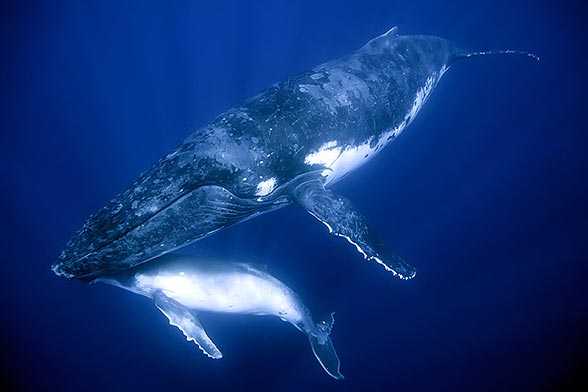Why Do Whales Migrate?

There’s a lot we still don’t know about whale migration. What knowledge we have had until recently has been based on records kept when whaling – the hunting and killing of whales for commercial, scientific or recreational purposes – was common.
More recently, advances in radio and satellite telemetry have enabled us to track these huge mammals’ progress more accurately. While some behaviors are still a mystery to us, satellite tagging has helped us understand a little more about how and why whales migrate.
This practice has revealed that some whale species travel much further than scientists had previously thought. Each of the 80 or more species of whale has its own migration patterns; and not every whale in a population will migrate at the same time. Immature humpback whales, for example, will generally not travel such great distances as their adult counterparts, because they’re not yet ready to reproduce.
Humpback Whale Taking a Leap in Alaska
What’s known, though, is that broadly speaking, whales move towards the poles in the summer, aiming for the better, more nutrient-rich food supplies these waters offer. This intense period of feeding helps them to store energy in the form of blubber to be used during the winter period. During this time, they head for warmer climes nearer the equator – where the food sources are less rich - either to mate or to give birth to and feed their calves.
The gray whale is thought to be the biggest wanderer, not just of whale species but of all marine mammals. During the course of a year, they can travel for upwards of 10-12,000 miles from their feeding grounds in the Bering and Chukchi Seas off Alaska to their breeding grounds off Baja California in Mexico.
The male sperm whale likes to travel alone from ocean to ocean and doesn’t seem to follow any recognizable pattern.
A great place to see the magnificent humpback whale is in and around the islands of Hawaii – this area holds the greatest known concentration of humpback whales, with an estimated four to six thousand gathering there to reproduce every year. The calm seas protected from trade winds and clear, shallow warm waters make it a haven, both for the whales to calve their young in safety and for man to observe what must truly be one of the wonders of nature.
You can observe these incredible creatures by embarking on an organized tour with local guides that will share their knowledge in whales and the amazing ecosystems they live in.